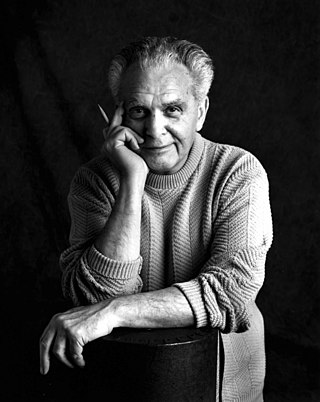
Jack Kirby was an American comic book artist, widely regarded as one of the medium's major innovators and one of its most prolific and influential creators. He grew up in New York City and learned to draw cartoon figures by tracing characters from comic strips and editorial cartoons. He entered the nascent comics industry in the 1930s, drawing various comics features under different pen names, including Jack Curtiss, before settling on Jack Kirby. In 1940, he and writer-editor Joe Simon created the highly successful superhero character Captain America for Timely Comics, predecessor of Marvel Comics. During the 1940s, Kirby regularly teamed with Simon, creating numerous characters for that company and for National Comics Publications, later to become DC Comics.
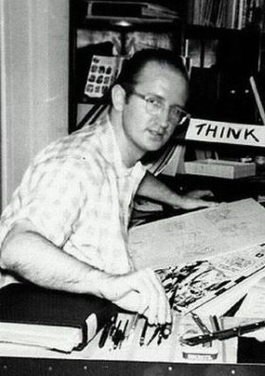
Stephen John Ditko was an American comics artist and writer best known for being the co-creator of Marvel superhero Spider-Man and creator of Doctor Strange. He also made notable contributions to the character of Iron Man, revolutionizing the character's red and yellow design.

"Fourth World" was a metaseries of connected comic book titles written and drawn by Jack Kirby and published by DC Comics from 1970 to 1973. Although they were not marketed under this title until the August–September 1971 issues of New Gods and Forever People, the terms Fourth World and Jack Kirby's Fourth World have gained usage in the years since. Kirby created the Fourth World concept in the 1970s. The series is a science-fiction based mythology that revolves around ancient space deities known as the New Gods. The New Gods are similar to the gods of Earth lore.

The Silver Age of Comic Books was a period of artistic advancement and widespread commercial success in mainstream American comic books, predominantly those featuring the superhero archetype. Following the Golden Age of Comic Books, the Silver Age is considered to cover the period from 1956 to 1970, and was succeeded by the Bronze Age.
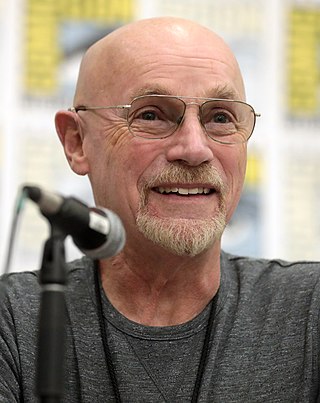
James P. Starlin is an American comics artist and writer. Beginning his career in the early 1970s, he is best known for space opera stories, for revamping the Marvel Comics characters Captain Marvel and Adam Warlock, and for creating or co-creating the Marvel characters Thanos, Drax the Destroyer, Gamora, Nebula, and Shang-Chi, as well as writing the acclaimed miniseries The Infinity Gauntlet and its many sequels including The Infinity War and The Infinity Crusade, all detailing Thanos' pursuit of the Infinity Gems to court Mistress Death by annihilating half of all life in the cosmos, before coming into conflict with the Avengers, X-Men, Fantastic Four, the Elders of the Universe, joined by the Silver Surfer, Doctor Strange, Gamora, Nebula, and Drax.

Timely Comics is the common name for the group of corporations that was the earliest comic book arm of American publisher Martin Goodman, and the entity that would evolve by the 1960s to become Marvel Comics.
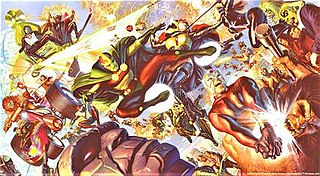
The New Gods are a fictional extraterrestrial race appearing in the eponymous comic book series published by DC Comics, as well as selected other DC titles. Created and designed by Jack Kirby, they first appeared in February 1971 in New Gods #1.
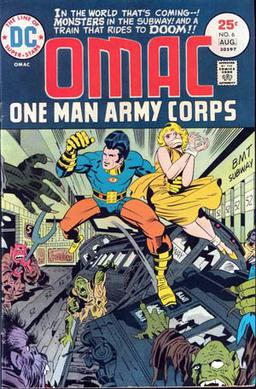
OMAC is a superhero appearing in American comic books published by DC Comics.

Vision (Aarkus) is a superhero appearing in American comic books published by Marvel Comics. Created by the writer Joe Simon and artist Jack Kirby, the character first appeared during the Golden Age of comic books in Marvel Mystery Comics #13, published by Marvel predecessor Timely Comics.
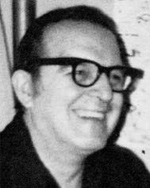
Charles Eber "Chic" Stone was an American comic book artist best known as one of Jack Kirby's Silver Age inkers, including his landmark run of Fantastic Four.
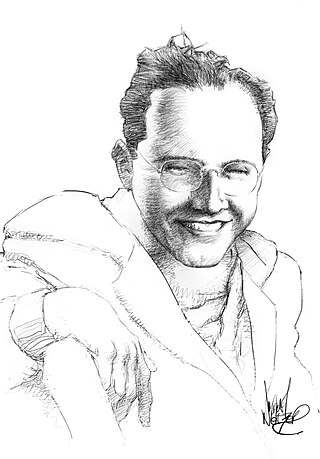
Louis Kenneth Fine was an American comic book artist known for his work during the 1940s Golden Age of comic books, where his draftsmanship became an influential model to a generation of fellow comics artists.

Scott Joseph Shaw, often spelled Scott Shaw! and Scott Shaw? in Rick and Steve, is an American cartoonist, animator, and historian of comics. Among Shaw's comic-book work is Hanna-Barbera's The Flintstones, Captain Carrot and His Amazing Zoo Crew, and Simpsons Comics. He was also the first artist for Archie Comics' Sonic the Hedgehog comic book series.
In the United States, creator ownership in comics is an arrangement in which the comic book creator retains full ownership of the material, regardless of whether the work is self-published or published by a corporate publisher.
Pure Imagination is a comic book, magazine, and comics-related book publisher run by Greg Theakston since 1975.
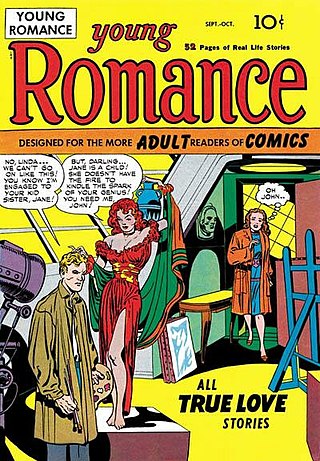
Young Romance is a romantic comic book series created by Joe Simon and Jack Kirby for the Crestwood Publications imprint Prize Comics in 1947. Generally considered the first romance comic, the series ran for 124 consecutive issues under Prize imprint, and a further 84 published by DC Comics after Crestwood stopped producing comics.
Ken Bruzenak is an American comic book letterer, primarily known for his work on Howard Chaykin’s American Flagg! Bruzenak's lettering and logowork was integral to the comic's futuristic, trademark-littered ambience. During the course of his career, Bruzenak has been closely associated with both Chaykin and Jim Steranko.

Sheldon "Shel" Dorf was an American comic book enthusiast and the founder of San Diego Comic-Con International. Dorf was also a freelance artist and graphic designer, who lettered the Steve Canyon comic strip for the last 12 to 14 years of the strip's run.
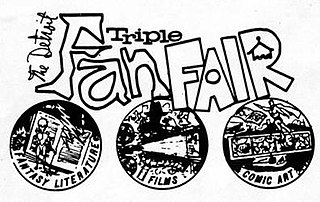
The Detroit Triple Fan Fair (DTFF) was a multigenre convention generally held annually in Detroit from 1965 to 1977. It is credited for being one of the first comic book conventions in the United States. The Triple Fan Fair also gave balanced coverage to historic film showings and science fiction literature, in a manner that provided a template for many future convention organizers — most of which have yet to attain the same level of equal service to this sort of linked fan base.
Michael Gold is an American comics writer, editor and publisher, known for his work as the former media coordinator for the defense for the Chicago Conspiracy Trial, Group Editor and Director of Editorial Development at DC Comics, co-founder of First Comics, and the co-founder and director of communication National Runaway Switchboard as well as a disk jockey in Chicago in the 1970s.
Francis Edward Herron was an American comic book writer and editor active in the 1940s–1960s, mainly for DC Comics. He is credited with co-creating Captain Marvel Jr. and the Red Skull, as well as such characters as Cave Carson, Nighthawk, and Mr. Scarlet and Pinky the Whiz Kid. Herron spent the bulk of his time in the comics industry writing for such characters as Green Arrow, Superman, and the Western character Tomahawk.














